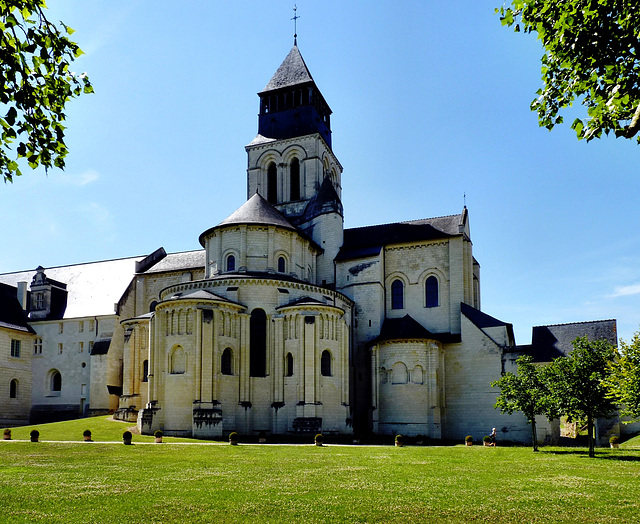Fontevraud Abbey
Fontevraud Abbey
Fontevraud Abbey
Fontevraud Abbey
Fontevraud Abbey
Fontevraud Abbey
Fontevraud Abbey
Fontevraud Abbey
Fontevraud Abbey
Fontevraud Abbey
Fontevraud Abbey
Fontevraud Abbey
Fontevraud Abbey
Fontevraud Abbey
Fontevraud Abbey
Fontevraud Abbey
Saumur - Château
Saumur - Château
Le Vieil-Baugé - Saint-Symphorien
Baugé - Château
Fougeré - Saint-Étienne
Fougeré - Saint-Étienne
Fougeré - Saint-Étienne
Fontevraud Abbey
Fontevraud Abbey
Fontevraud Abbey
Breuil-sous-Argenton - Charolaise
Breuil-sous-Argenton - Château de l'Ebaupinay
Argenton-Château - Saint-Gilles
Argenton-Château - Saint-Gilles
Argenton-Château - Saint-Gilles
Argenton-Château - Saint-Gilles
Argenton-Château - Saint-Gilles
Argenton-Château - Saint-Gilles
Argenton-Château - Saint-Gilles
Argenton-Château
Argenton-Château
Saint-Amant-de-Boixe - Abbaye de Saint-Amant
Saint-Amant-de-Boixe - Abbaye de Saint-Amant
Saint-Amant-de-Boixe - Abbaye de Saint-Amant
Saint-Amant-de-Boixe - Abbaye de Saint-Amant
Saint-Amant-de-Boixe - Abbaye de Saint-Amant
Saint-Amant-de-Boixe - Abbaye de Saint-Amant
Saint-Amant-de-Boixe - Abbaye de Saint-Amant
Saint-Amant-de-Boixe - Abbaye de Saint-Amant
Location
See also...
Keywords
Authorizations, license
-
Visible by: Everyone -
All rights reserved
-
283 visits
Fontevraud Abbey


Robert d'Arbrissel (1045 – 1116) started his career as an itinerant preacher. After a conflict with the bishop of Rennes, he was exiled to Paris. The bishop recalled him back later and appointed Robert to be an archpriest for reforming the clergy, what meant fighting lay investiture, clerical concubinage etc. His reforming zeal aroused such enmity that after the bishop´s death, he was compelled to leave the diocese.
He became a hermit, but he did not stay lonely in the forests. His piety, eloquence, sympathetic view of women attracted many followers, for whom in 1096 he founded the monastery of La Roé. The same year, Pope Urban II, touring through France, met Robert and appointed him "preacher second only to himself".
Robert left the convent and, living in the utmost destitution, restarted his life as an itinerant preacher, addressing the poor. His eloquence and his ascetic appearance, drew crowds. He again came into conflict with a bishop. In 1100, during a council in Poitiers, he was requested to give up his nomadic life and to settle down with his followers. A piece of land ("Fons Evraldi") was bestowed on him, where at 1001 Robert founded the "double monastery" Fontevraud Abbey.
He invited people of every age and condition to join - "under the leadership of a woman". This may have attracted many noble and wealthy ladies. Robert himself could bear the sedentary life only for a short while. He appointed Hersende de Champagne (Heloisa´s mum?) to lead the convent and hit the road again. In 1116 he died in the Priory of Orsan.
At that time, the abbey had 35 priories already and Hersende had already commissioned the construction of the church. The monastery, Hersende had in mind, when she started the process, should accomodate at least 500 nuns and "fratres". The apse, seen here, was consecrated by Pope Callixtus II in 1119.
From the very beginning the convent had a strong support from the aristocracy, above all from the House of Plantagenet. Eleanor of Aquitaine, one of the most powerful ladies of medieval times, joined the convent, when she retired from the political powergame in 1200. She died here in 1204 and in the nave of this church, once choosen as the burial place for the House of Plantagenet, is her tomb.
He became a hermit, but he did not stay lonely in the forests. His piety, eloquence, sympathetic view of women attracted many followers, for whom in 1096 he founded the monastery of La Roé. The same year, Pope Urban II, touring through France, met Robert and appointed him "preacher second only to himself".
Robert left the convent and, living in the utmost destitution, restarted his life as an itinerant preacher, addressing the poor. His eloquence and his ascetic appearance, drew crowds. He again came into conflict with a bishop. In 1100, during a council in Poitiers, he was requested to give up his nomadic life and to settle down with his followers. A piece of land ("Fons Evraldi") was bestowed on him, where at 1001 Robert founded the "double monastery" Fontevraud Abbey.
He invited people of every age and condition to join - "under the leadership of a woman". This may have attracted many noble and wealthy ladies. Robert himself could bear the sedentary life only for a short while. He appointed Hersende de Champagne (Heloisa´s mum?) to lead the convent and hit the road again. In 1116 he died in the Priory of Orsan.
At that time, the abbey had 35 priories already and Hersende had already commissioned the construction of the church. The monastery, Hersende had in mind, when she started the process, should accomodate at least 500 nuns and "fratres". The apse, seen here, was consecrated by Pope Callixtus II in 1119.
From the very beginning the convent had a strong support from the aristocracy, above all from the House of Plantagenet. Eleanor of Aquitaine, one of the most powerful ladies of medieval times, joined the convent, when she retired from the political powergame in 1200. She died here in 1204 and in the nave of this church, once choosen as the burial place for the House of Plantagenet, is her tomb.
(deleted account) has particularly liked this photo
- Keyboard shortcuts:
Jump to top
RSS feed- Latest comments - Subscribe to the comment feeds of this photo
- ipernity © 2007-2024
- Help & Contact
|
Club news
|
About ipernity
|
History |
ipernity Club & Prices |
Guide of good conduct
Donate | Group guidelines | Privacy policy | Terms of use | Statutes | In memoria -
Facebook
Twitter

Sign-in to write a comment.